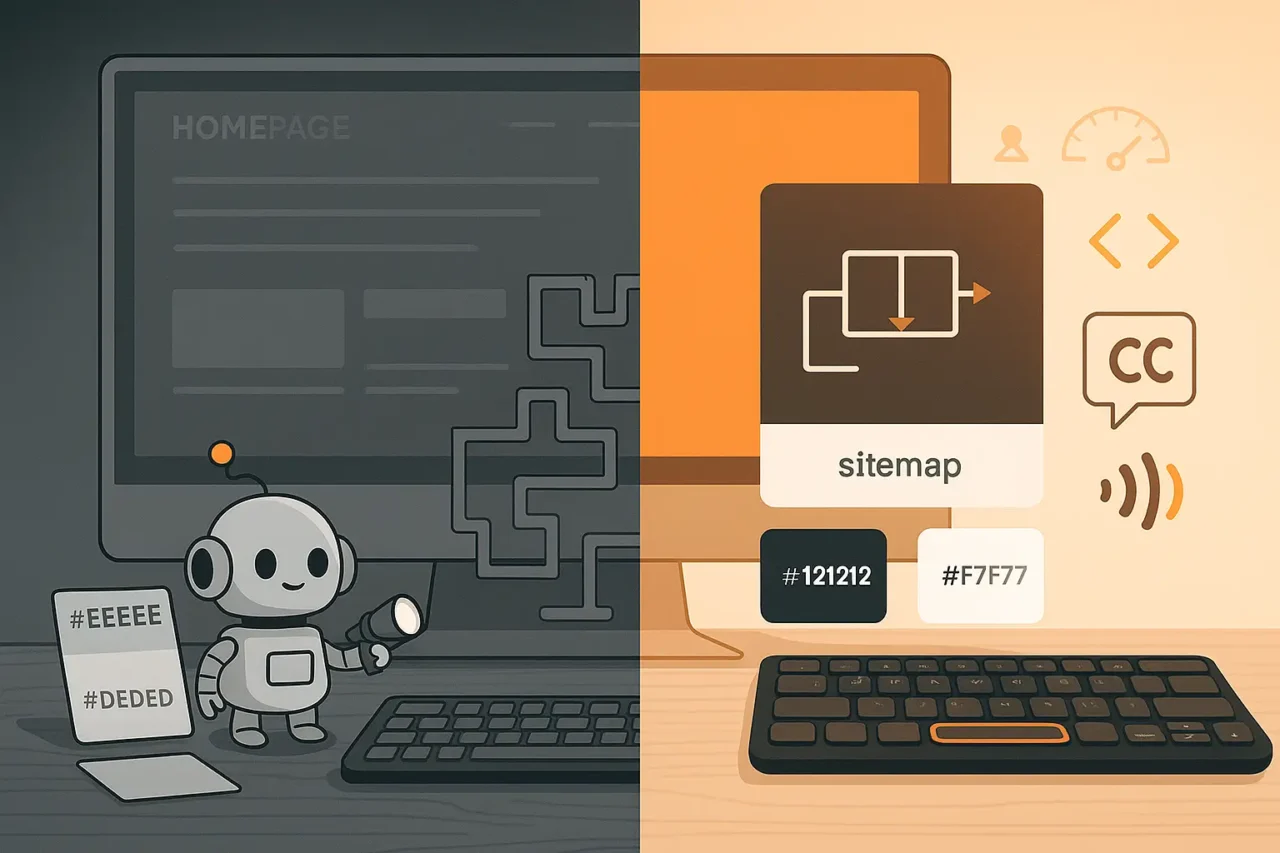You’ve been there. The project started with so much promise. The client was thrilled with the creative, the strategy was sharp, and everyone was buzzing with excitement. But now, it’s two months past the deadline, the budget is a distant memory, and your team is communicating exclusively through exasperated sighs and passive-aggressive Slack emojis. What went wrong? More often than not, the project was derailed by a few common—and completely avoidable—tech mistakes. As a tech partner to some of Canada’s best creative agencies, we’ve had a front-row seat to what works and what… well, what leads to late nights fuelled by stale coffee and regret. The good news? We’ve also learned how to prevent these mistakes before they happen.
Let’s Be Honest: Tech Can Be Tricky
As a creative or PR agency, your zone of genius is branding, storytelling, and strategy. You’re brilliant at capturing hearts and minds. But when it comes to the technical guts of a digital project, it can feel like you’re navigating a minefield in the dark. That’s totally normal. You don’t need to become a senior developer overnight. You just need to be aware of the common traps so you can sidestep them like a pro. Think of us as your friendly guide through that minefield. We’re here to light the way and point out the spots where others have stumbled, so you can walk your projects straight to the finish line, on time and on budget. Let’s dive into the five biggest tech mistakes we see agencies make, and more importantly, how to avoid them for good.

Mistake #1
Treating Tech as an Afterthought
This is the big one. The original sin of so many troubled projects. The creative team works in a silo for weeks, crafting a breathtakingly beautiful, conceptually brilliant design. They present it to the client, who falls in love and signs off immediately. Only then is the design handed over to the development team, who takes one look and says, “This is impossible.” Okay, maybe not impossible, but building it will require a custom framework that costs a fortune, rely on an obscure API that’s notoriously unreliable, and it definitely won’t work on mobile without a complete rethink. The project grinds to a halt. The client is unhappy, the creative team is defensive, and the budget is already in jeopardy.
The Damage Done
- Budget & Timeline Explosion: Retrofitting a design to make it technically feasible is always more expensive and time-consuming than building it right from the start.
- Creative Compromise: The original vision gets watered down as features are cut or changed to fit technical constraints.
- Internal Friction: It pits the creative and technical teams against each other, creating a culture of blame instead of collaboration.
The Fix: Bring Your Tech Partner in Early. No, Earlier Than That.
The solution is beautifully simple: involve your tech partner from the brainstorming phase. Seriously. When you’re still sketching on a whiteboard, have them in the room (or on the Zoom call). A good tech partner won’t stifle creativity; they’ll enhance it. They can:
- Provide a “Feasibility Gut Check”: As ideas are flying, they can gently raise a hand and say, “That’s an amazing idea. To make it work, we’d need to consider X, Y, and Z. Have we thought about that?”
- Suggest Creative Technical Solutions: Sometimes, technology can open up creative avenues you hadn’t even considered. They might say, “What if instead of a static image here, we used a lightweight animation library to bring it to life? It would have a huge impact with minimal performance cost.”
- Help Define the Scope: By understanding the goals from day one, they can help you create a realistic scope of work that aligns the creative vision with the client’s budget and timeline. This makes your proposals and pitches infinitely more accurate and powerful.
Mistake #2
The Vaguely Defined Scope (a.k.a. “Scope Creep’s Playground”)

“Scope creep” are the two dirtiest words in project management. It’s that sneaky process where a simple website project slowly morphs into an all-singing, all-dancing e-commerce platform with a custom CRM integration and a puppy delivery API. It starts with small requests: “Could we just add a small button here?” or “Can this form also do this one other thing?” This happens when the initial scope of work (SOW) is vague. Phrases like “user-friendly back-end,” “standard social media integration,” or “mobile-optimized design” are open to wild interpretation. Your idea of “user-friendly” and your client’s idea could be worlds apart.
The Damage Done
- Destroyed Profit Margins: Every “little change” adds up, eating away at your project’s profitability until you’re working for free.
- Strained Client Relationships: Constantly going back to the client for more money for out-of-scope requests creates tension and makes you look like you didn’t plan properly.
- Team Burnout: Your team is constantly context-switching and trying to hit a moving target, leading to frustration and exhaustion.
The Fix: Get Granular and Create a “Scope Bible”
Your SOW and project brief should be excruciatingly detailed. It’s more work upfront, but it will save you a world of pain later.
- Define Everything: Instead of “social media integration,” write “Share buttons for Facebook, Twitter, and LinkedIn will be present on all blog posts and will share the post’s title, featured image, and a short description.”
- Set Revision Rounds: Clearly state the number of revision rounds included for design and content. For example, “This quote includes two rounds of client revisions at the wireframe stage and two at the high-fidelity design stage.”
- Create a Change Request Process: Have a simple, formal process for any new requests. It could be a simple form that outlines the request, its impact on the timeline and budget, and requires a client signature to approve. This turns “Can you just…” into a conscious business decision for the client.
A good tech partner will be your best friend in this process. They will help you ask the right questions to flesh out the technical details of the SOW, ensuring there are no grey areas left to interpretation.

Mistake #3
Choosing the Wrong Technology for the Job
Not all platforms are created equal. Choosing a technology because it’s what you’ve always used, or because it’s the cheapest, is a recipe for disaster. Using a simple WordPress theme for a complex e-commerce store with thousands of products is like trying to haul lumber in a sports car. It’s just the wrong tool. Conversely, building a simple five-page brochure site on a complex, enterprise-level platform is massive overkill.
The Damage Done
- Poor Performance & Security: The site is slow, clunky, and vulnerable to attacks because the platform is being pushed beyond its limits.
- Inability to Scale: The client’s business grows, but their website can’t grow with it. Adding new features becomes a hacky, expensive nightmare.
- Difficult Content Management: The client can’t even update their own blog because the back-end is either too limited or too complex for their needs.
The Fix: Adopt a Tech-Agnostic, Strategy-First Approach
The project’s goals should dictate the technology, not the other way around. This is where a strategic tech partner is invaluable. They should be “tech-agnostic,” meaning they don’t have a vested interest in selling you one specific platform.
- Start with “Why”: Before you even think about platforms, your tech partner should ask questions like: “What is the primary business goal of this website?” “Who will be updating the content, and how tech-savvy are they?” “What are your growth plans for the next three years? What features might you need down the road?”
- Get a Recommendation (and an Explanation): Based on your answers, they should be able to recommend a specific technology (e.g., WordPress for its flexibility, Shopify for e-commerce, or a headless CMS for performance and scalability) and explain why it’s the right choice in plain language.
Mistake #4
Ignoring Post-Launch Support and Maintenance

You and your team work tirelessly to get the client’s beautiful new website across the finish line. You pop the virtual champagne, send the final invoice, and move on to the next exciting project. Two months later, you get a frantic email from the client. The site is down. A plugin update broke the contact form, and they’ve been missing leads for three days. Your reputation takes a massive hit. A website is not a print brochure; you can’t just design it, launch it, and forget it. It’s a living piece of software that needs regular care and feeding.
The Damage Done
- Security Vulnerabilities: Out-of-date software is the number one way websites get hacked.
- Bugs and Breakages: Software updates can cause conflicts that break functionality.
- Damaged Client Trust: The client feels abandoned. The goodwill you built during the project evaporates.
The Fix: Plan for “Day Two” from Day One
Post-launch support shouldn’t be an afterthought; it should be part of the initial proposal.
- Sell a Maintenance Retainer: Frame this not as a cost, but as an insurance policy for their investment. A good maintenance plan should include regular software updates, security scans, performance checks, and backups.
- Define the Support Process: Create a clear Service Level Agreement (SLA). How does the client submit a support request? What are your guaranteed response times for critical vs. non-critical issues?
- Partner for the Long Haul: This is a huge benefit of working with a tech partner versus a freelancer. A dedicated partner like Digiteam has the systems and team in place to offer reliable, ongoing support long after the initial project is complete.

Mistake #5
Underestimating Accessibility and SEO
In the rush to create something visually stunning, two crucial technical foundations are often overlooked: accessibility (A11y) and search engine optimization (SEO). Accessibility means designing and building your website so that people with disabilities can use it. In many parts of Canada, this isn’t just a nice-to-have; it’s a legal requirement (hello, AODA in Ontario!). SEO is the technical groundwork that allows search engines like Google to find, crawl, and rank your site. Pushing these to the end of the project is a massive mistake. Retrofitting a site for accessibility and proper SEO is far more difficult and expensive than building it in from the beginning.
The Damage Done
- Legal Risks: You could be exposing your client (and your agency) to lawsuits.
- Lost Audience: You’re excluding up to 20% of the population who may have a disability. From an SEO perspective, if Google can’t find you, you’re invisible to potential customers.
- Expensive Rework: Fixing these issues post-launch often requires significant code changes.
The Fix: Bake A11y and SEO into Your Process
- Educate Your Team & Clients: Make sure everyone understands that these are not optional add-ons. They are fundamental to a successful digital product.
- Include it in the Scope: Have line items in your SOW for “On-page technical SEO implementation” and “WCAG 2.1 AA accessibility compliance.”
- Lean on Your Tech Partner: A competent tech partner will build with these principles in mind from the very first line of code. They’ll know to use semantic HTML, ensure proper colour contrast, implement alt tags, and structure the site for optimal crawling.
Conclusion: Turn Mistakes into Strengths
These five mistakes might seem scary, but they all share a common solution: a strong, collaborative partnership between your agency and your tech team. By bringing tech into the conversation early, defining your scope with precision, choosing the right tools, planning for the long term, and building on a solid foundation, you can turn these potential pitfalls into your agency’s greatest strengths. You’ll deliver better work, have happier clients, and run more profitable, less stressful projects.

Feeling a little too seen right now? It’s okay. We can help you build the processes to avoid these mistakes for good. Let’s talk about your next project. Email us at [email protected].
